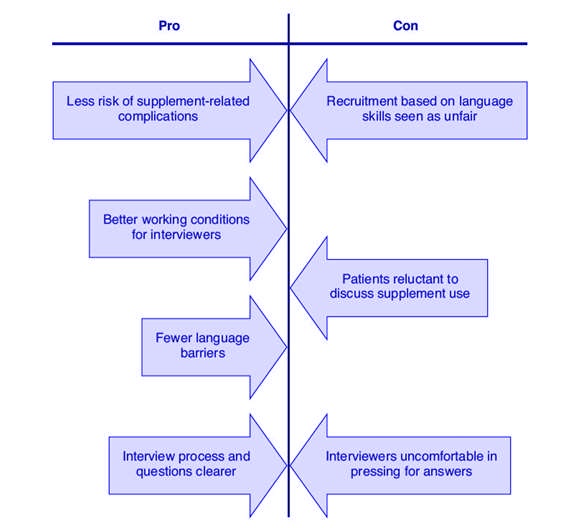Overview
Force field analysis is a basic tool for root cause analysis that can help you take action once the root cause has been identified. The technique is based on the assumption that any situation is the result of forces for and against the current state being in equilibrium. Countering the opposing forces and/or increasing the favorable forces will help induce a change by reinforcing positives and eliminating or reducing negatives.
Force field analysis does the following:
- Presents the positives and negatives of a situation so they are easily comparable.
- Considers all aspects of making the desired change.
- Encourages agreement about the relative priority of factors on each side of the balance sheet.
- Encourages honest reflection on the underlying roots of a problem and its solution.
Table of Contents
About Force Field Analysis
Force Field Analysis was created by Kurt Lewin in the 1940s. Lewin originally used it in his work as a social psychologist. Today, however, it is also used in business, for making and communicating go/no-go decisions.
The idea behind Force Field Analysis is that situations are maintained by an equilibrium between forces that drive change and others that resist change, as shown in figure 1, below. For change to happen, the driving forces must be strengthened or the resisting forces weakened.

How to Use Force Field Analysis
To carry out a Force Field Analysis, use a blank sheet of paper or a whiteboard, or download our worksheet and follow these five steps.
Step 1: Describe Your Plan or Proposal for Change
Define your goal or vision for change, and write it down in a box in the middle of the page.
Step 2: Identify Forces For Change
Think about the kinds of forces that are driving change. These can be internal and external.
Internal drivers could include:
- Outdated machinery or product lines.
- Declining team morale.
- A need to increase profitability.
External drivers could include:
- A volatile, uncertain operating environment.
- Disruptive technologies.
- Changing demographic trends.
Step 3: Identify Forces Against Change
Now brainstorm the forces that resist or are unfavorable to change.
Internal resistors and restrainers could include:
- Fears of the unknown.
- Existing organizational structures.
- "That's not how we do it here" attitudes.
External factors might be:
- Existing commitments to partner organizations.
- Government legislation.
- Obligations toward your customers.
- Now add the forces against change to the right-hand side of your Force Field Analysis.
Step 4: Assign Scores
Next, score each force, from, say, one (weak) to five (strong), according to the degree of influence each one has on the plan, and then add up the scores for each side (for and against).
For a visual representation of the influence that each force has, draw arrows around them. Use bigger arrows for the forces that will have a greater influence on the change, and smaller arrows for forces that will have a weaker influence.

Step 5: Analyze and ApplyStep 5: Analyze and Apply
Now that you've done your Force Field Analysis, you can use it in two ways:
- To decide whether or not to move forward with the decision or change.
- To think about which supportive forces you can strengthen and which opposing or resisting forces you can weaken, and how to make the change more successful.
If you had to implement the project in the example above, the analysis might suggest a number of changes that you could make to the initial plan. For instance, you could:
- Train staff to minimize their fear of technology. The +1 cost of training increases "Cost" to -4 but the -2 benefits reduce "Staff fearful of new technology" to -1.
- Show staff that change is necessary for business survival. This new, +2 force supports the change.
- Show staff that new machines would introduce variety and interest to their jobs. This new, +1 force also supports the change.
- Raise wages to reflect new productivity. The +1 cost of raising wages takes "Cost" to -5, but the -2 benefits reduce "Loss of overtime" to -1.
- Install slightly different machines with filters that eliminate pollution. The -1 benefit of the new machines eliminates "Impact on environment" as a force against change.
Force Field Analysis Process
Conduct a force field analysis through the following steps:
- Brainstorm all possible forces inside and outside the organization that could work for or against the solution.
- Assess the strength of each of the forces.
- Place the forces in a force field diagram, with the length of each arrow in the diagram proportional to the strength of the force it represents.
- For each force, but especially the stronger ones, discuss how to increase the forces for the change and reduce those against it.
Example
An office-based surgery center needed to uncover patients’ use of herbal supplements and instruct them to cease use some time before surgery. The center decided upon a number of different actions. Some revolved around the preoperative telephone interview conducted days in advance of the procedure:
- Allocating two “silent rooms” in which to conduct these interviews.
- Instructing the interviewers to press for clear answers to questions regarding patients’ use of supplements.
- Developing an interview guide/checklist where the interviewer can check off responses obtained to record the answers.
- In the longer run, employing at least one nurse with language skills beyond English.
Realizing that some of these remedies might meet with resistance from staff or patients, the analysis team decided to assess the implementation situation using force field analysis. The analysis is shown below, identifying patients’ embarrassment or reluctance to answer honestly as the most serious obstacle. In favor of implementation, the much higher likelihood of avoiding supplement-related complications should induce interviewers to be more persistent in obtaining answers.
References
Ramalingam, B. (2006). 'Tools for Knowledge and Learning: A Guide for Development and Humanitarian Organizations,' London: Overseas Development Institute. p.32.













